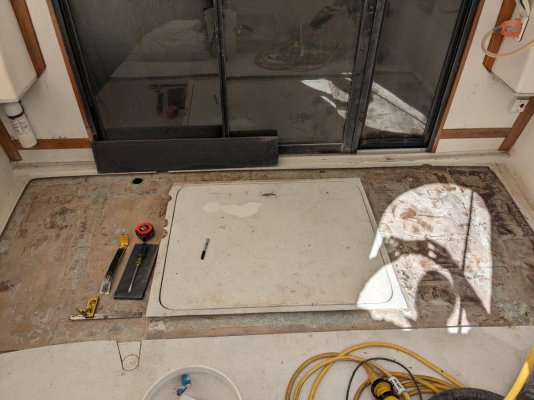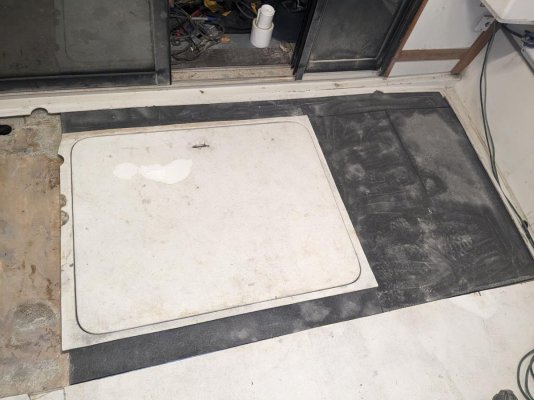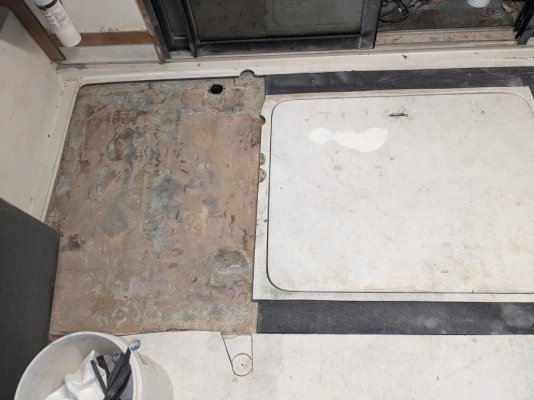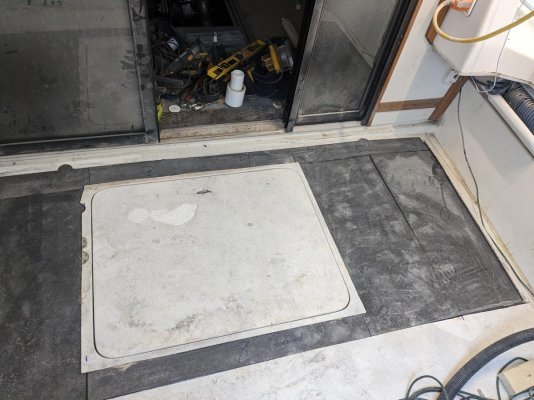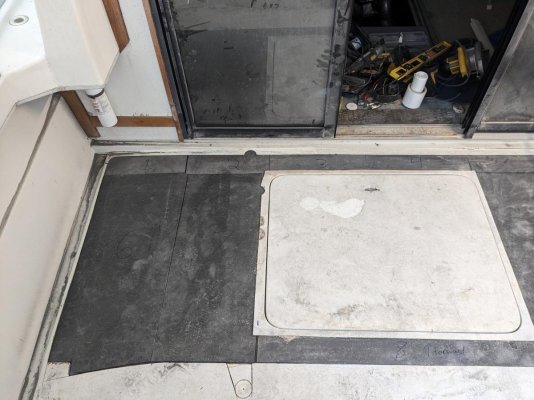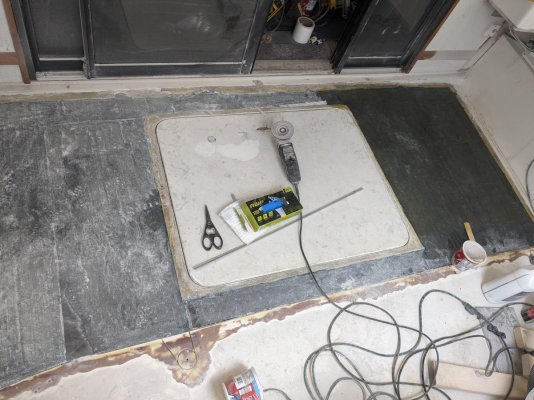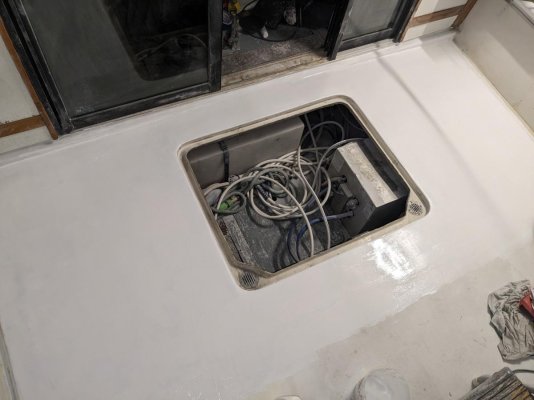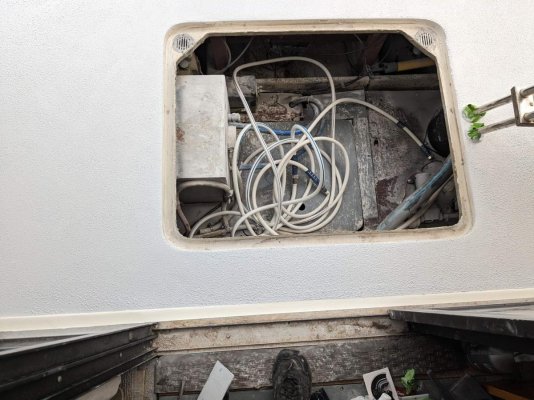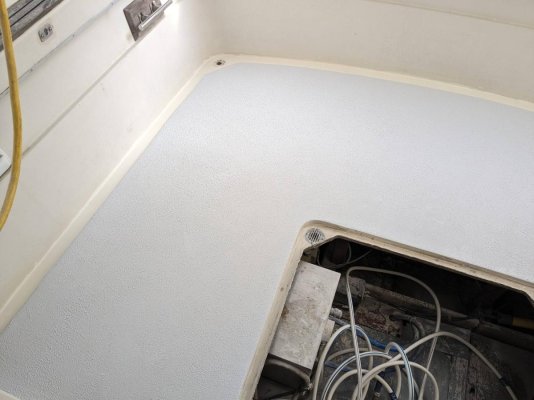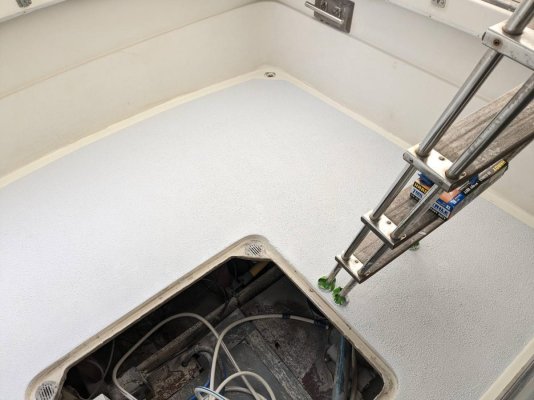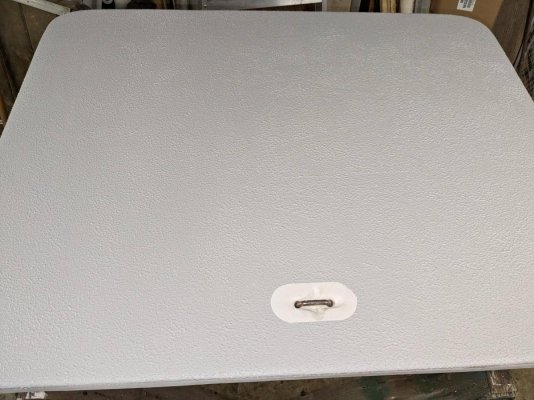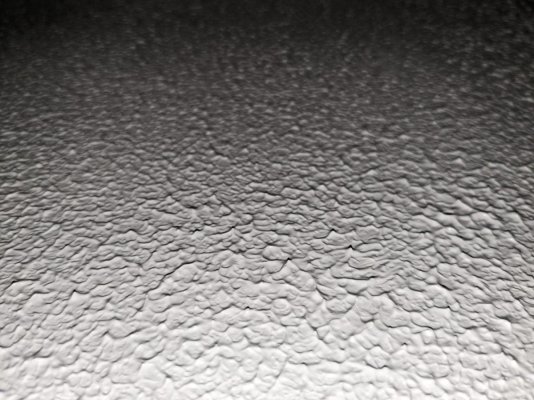Gdavid
Guru
I try to tackle at least one significant repair or upgrade to my old boat each spring, hopefully this will keep it in a safe and enjoyable condition without burning myself out by ripping too much apart at once.
This spring's project is re-coring the cockpit deck. It had a couple of soft spots and I suspected the damage to be a bit more widespread than the symptoms revealed, but it still exceeded my expectations.
I could feel a soft spot on the port side at the base of the ladder to the fly bridge, pretty typical of poorly bedded hardware. There was also a lot of flex and creaking between the hatch and the sliding door to the salon. The starboard side felt firm but there was "tea" seeping up through a crack in the gelcoat. A halfhearted attempt to repair the gelcoat and hide the condition for the rest of the season failed, and it just came right through.
I have the coring all removed now, I left a 1" lip all the way at und and will section the panels to slide into the recesses. I will be using coosa board for the new coring.
It appears that the deck has been recorded at least twice, there is sections of foam coring material in some places, 3/4" in the majority of the deck and most oddly the last 1.5" of the deck, all the way across has been replaced with a solid white 3/4" material, possible expanded pvc and glassed over, refinishing the entire cockpit to match. The bottom section of fiberglass has been removed in this area and the white board is visible from below. Additional supports were added to the stringers and it feels very solid. I am surprised how well the fiberglass adhered to it. I am leaving it in place and will just bevel the fiberglass and transition the new top laminate into it, then resurface the whole cockpit deck. Finally I will hide all of the finish imperfections under kiwigrip.
This spring's project is re-coring the cockpit deck. It had a couple of soft spots and I suspected the damage to be a bit more widespread than the symptoms revealed, but it still exceeded my expectations.
I could feel a soft spot on the port side at the base of the ladder to the fly bridge, pretty typical of poorly bedded hardware. There was also a lot of flex and creaking between the hatch and the sliding door to the salon. The starboard side felt firm but there was "tea" seeping up through a crack in the gelcoat. A halfhearted attempt to repair the gelcoat and hide the condition for the rest of the season failed, and it just came right through.
I have the coring all removed now, I left a 1" lip all the way at und and will section the panels to slide into the recesses. I will be using coosa board for the new coring.
It appears that the deck has been recorded at least twice, there is sections of foam coring material in some places, 3/4" in the majority of the deck and most oddly the last 1.5" of the deck, all the way across has been replaced with a solid white 3/4" material, possible expanded pvc and glassed over, refinishing the entire cockpit to match. The bottom section of fiberglass has been removed in this area and the white board is visible from below. Additional supports were added to the stringers and it feels very solid. I am surprised how well the fiberglass adhered to it. I am leaving it in place and will just bevel the fiberglass and transition the new top laminate into it, then resurface the whole cockpit deck. Finally I will hide all of the finish imperfections under kiwigrip.

